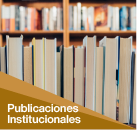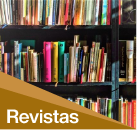Prácticas vivenciales de siembra y cosecha de maíz como estrategia de aprendizaje en el área arte y cultura
Fecha
2023-02-06Autor
Zapata Quispe, Edgard
Nivel de Acceso
Acceso AbiertoMetadatos
Mostrar el registro completo del ítemResumen
No hay duda que el planteamiento de una educación intercultural bilingüe requiere implementar estrategias que aborden las prácticas culturales y agrícolas como parte del fortalecimiento de la identidad y afirmación cultural. Diferentes trabajos de investigación que abordan el tema, sostienen la pertinencia de incorporar estas prácticas como parte de la formación educativa. Es harto conocido que un niño que aprende desde su vivencia, aprende mejor. Este trabajo de investigación tiene por objetivo revisar las reflexiones que existen en el medio educativo sobre la incorporación de saberes tradicionales y específicamente sobre los saberes de siembra y cosecha en el currículo educativo. Las prácticas vivenciales de siembra y cosecha de maíz tienen una riqueza cultural, las mismas que pueden ser aprovechadas desde diferentes áreas curriculares, una de estas áreas que podría facilitar la incorporación de estas prácticas sería el de Arte y Cultura. Considero que este trabajo puede inspirar a otros docentes a desarrollar investigaciones que exploren el terreno de los saberes culturales para afirmar a los estudiantes en su cultura. El presente trabajo consta de dos capítulos: en el primero se desarrollan aspectos relacionados a las prácticas culturales e identidad; en el segundo se consideran aspectos que ayudan a conocer la importancia de los saberes y prácticas agrícolas en la educación desde el punto de vista del currículo nacional y, por último, se desarrolla el Estado del arte en relación a los saberes de siembra y cosecha en la educación. There is no doubt that the approach to bilingual intercultural education requires implementing strategies that address cultural and agricultural practices as part of strengthening identity and cultural affirmation. Different research papers that address the issue support the relevance of incorporating these practices as part of educational training. It is well known that a child who learns from his experience, learns better. This research work aims to review the reflections that exist in the educational environment on the incorporation of traditional knowledge and specifically on the knowledge of planting and harvesting in the educational curriculum. The experiential practices of planting and harvesting corn have a cultural richness, the same that can be used from different curricular areas, one of these areas that could facilitate the incorporation of these practices would be that of Art and Culture, I consider that this work can inspire other teachers to develop research that explores the field of cultural knowledge to affirm students in their culture. This work consists of two chapters: in the first, aspects related to cultural practices and identity are developed; in the second, aspects that help to know the importance of agricultural knowledge and practices in education from the point of view of the national curriculum are considered and, finally, in the State of the art is developed in relation to the knowledge of sowing and harvest in education. Pisirimayllapi willasayki Manapantaymi kay educación intercultural bilingüe nisqaq mat’ipana kasqanta, yachaykuna, lliw imaymana chakra rurayninchiskunaq kawsayninchiskunaq saphinchanapaq. Tukuy k’uskiy llamk’aykunaq nisqankumanhina, mat’ipankun kay ruraykunaq yachachiykuna ukhupi kananpaq. Ancha yachasqan wawakunaq kawsayninkumantapacha yachayninku saphichasqankuqa. Kay k’uskiy rurasqaqa kachkan imaynatachus huq qhawariykuna hamut’arinku yachaywasikunaman chakra qayllakunappi yaschaykunata awapasunman chaykunata aswantaqa tarpuymanta, waqaychaymanta yachachiy mayt’ukunapi ima. Chakrapi sara llank’ayninchiskunaqa tukuy yachayniyuqmi, chaykunamanta hap’ipakuspa alwiriyta atisunmanmi tukuy yachaykunata lliw áreas curriculares nisqakunaq sunqunta, allin qhawariypaqqa kay Arte y Cultura sutichasqa p’ititaq sunqunta. Kay llamk’ayqa iskay hatun t’aqaman p’akisqan kachkan, qallariy kaq t’aqapin tarikun lliw kawsayninchiskunamanta rimariykuna, qhipanmantaq kachkan imakunachus yanaparin tukuy yachaykunaq hatunchakunanpaq yachachiykuna mat’ipana mayt’umantapacha, hina qhipanman tukuypunapaqtaq tarikullantaq yachay hamut’aypi, k’uskiy qillqakuna ñawincharisqanchimanta, yachaykuna tapurikusqanchikunamanta ima, sara llamk’ay ukhupi tukuy yachayninchiskunamanta. Chanin rimay: Tarpuy ukhupi ruraykuna, mihuy huñuy ukhupi ruraykuna, yachayninchis mat’ipanapaq llamk’aykuna, wata muyuypi kawsayninchiskuna.







